The staff of the Section of Invertebrate Zoology are currently working on many projects. One of those projects is gathering, organizing, and taking inventory of our type collection materials.

Type specimens are the specimens upon which the scientific name and description of a species are based. In other words, when scientists describe a new species, they use particular specimens to characterize the unique features of that particular species. Once a new species description is published, the specimen(s) used in the process of formally naming and describing the species become the type specimens.
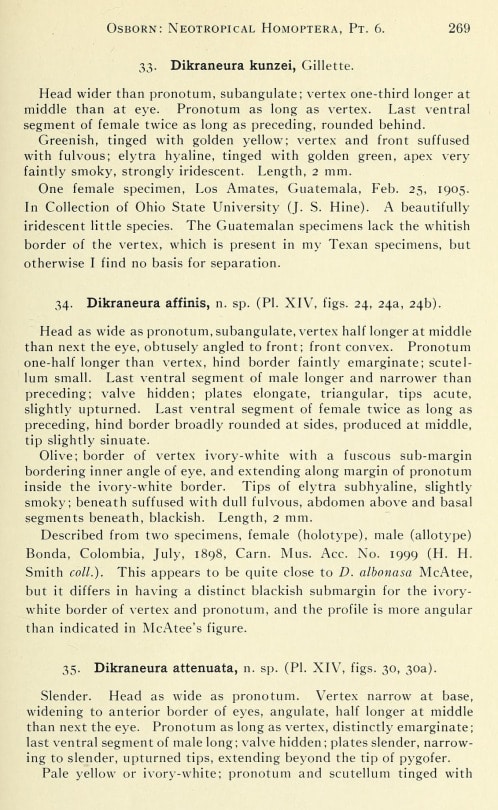
As such, type specimens are very valuable to science. Museum type collections serve as a sort of ‘library’ of species for scientific researchers. With millions of insect species found on the earth, identification of a specimen you have in hand can be a daunting task. Researchers around the world can compare specimens in their own collections with these scientific types to apply species-level determinations.
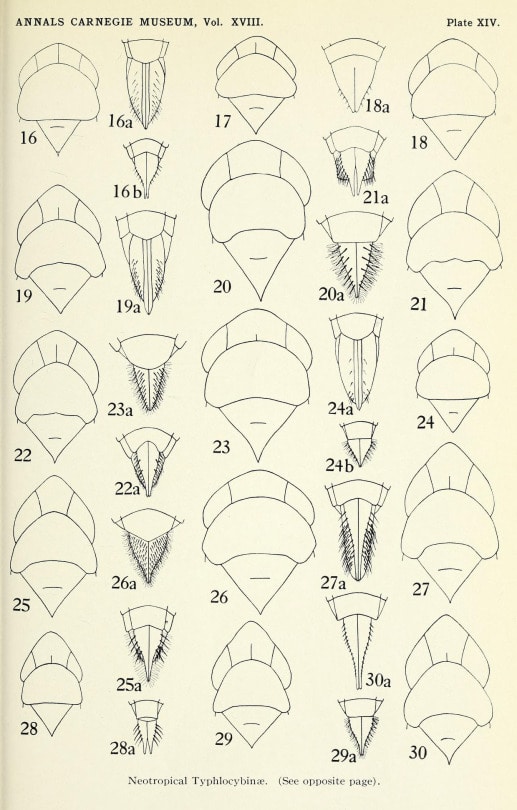
It is estimated that there are approximately 40,000+ type specimens in the Invertebrate Zoology collection at CMNH. A more complete inventory and cataloguing of the type specimens in Invertebrate Zoology is currently required so that our type collections can be of greater use to the scientific community.
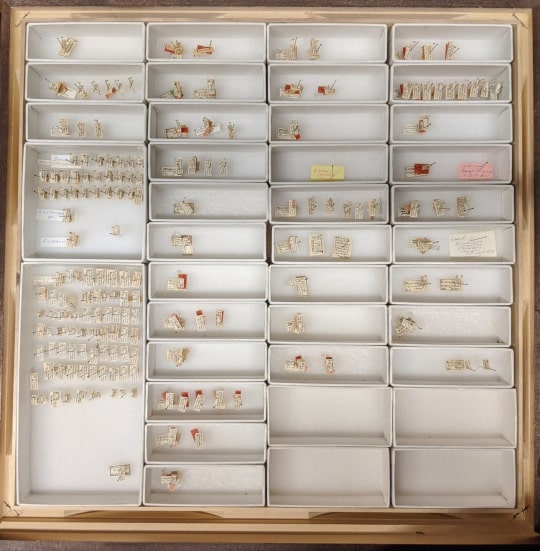
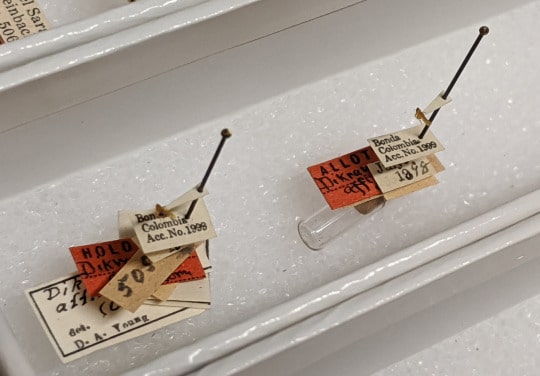
Prior to the availability of computers, George Wallace, a curator who worked at the museum on Hymenoptera from the 1930s to the 1970s, compiled and maintained a card catalog file of non-lepidopteran types in the Invertebrate Zoology collection.
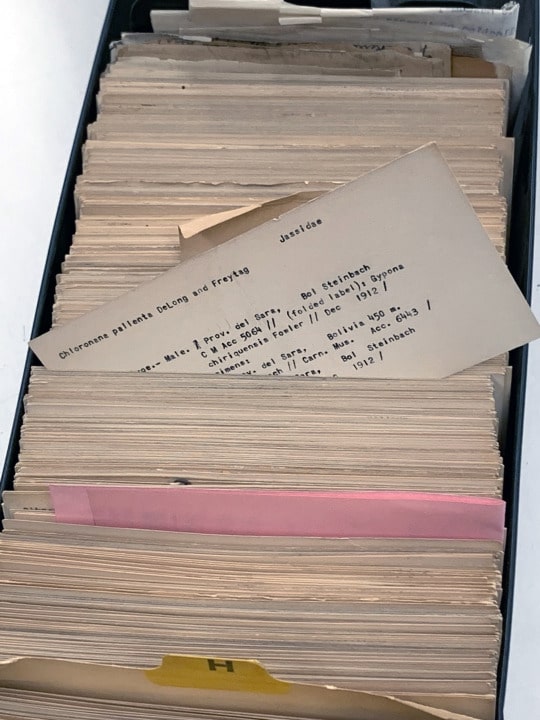
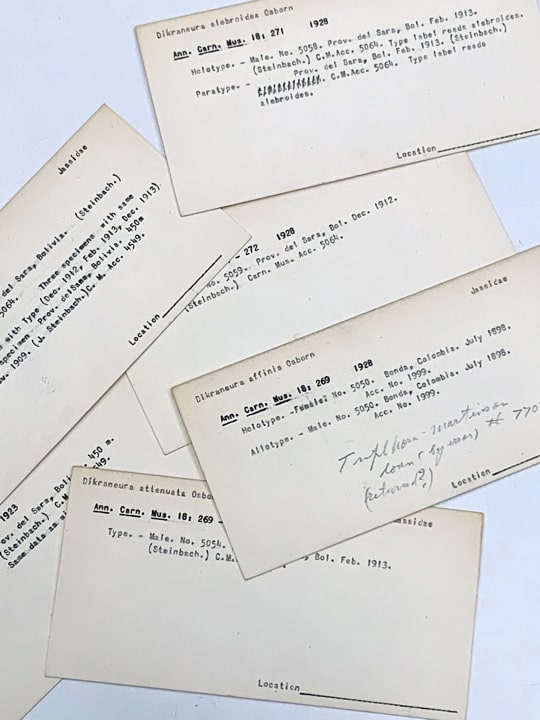
Many of the cards contain information about the published species descriptions, the numbers and kinds of type specimens in our collection, and label data associated with the specimens, including geographical, accession number, date, and collector information.
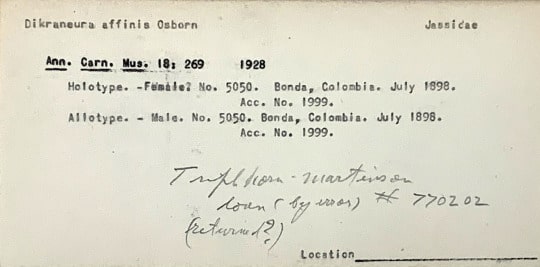
To assist in the type collection organization effort, I have been tasked with digitizing over 1100 of these cards. Digitizing the information renders it searchable and accessible to staff and allows for a more accurate inventory of our types.
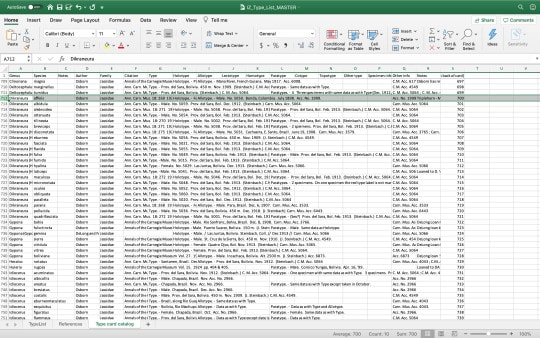
Currently, researchers must contact us directly with queries that relate to our type collection. In the future, we hope to photograph our type specimens and make all of their specimen data available via the internet so that researchers worldwide may have access to the invaluable type collection resource that resides in the Section of Invertebrate Zoology at CMNH.
Hillary Fetzner is a Laboratory Assistant in the Section of Invertebrate Zoology at Carnegie Museum of Natural History. Museum employees are encouraged to blog about their unique experiences and knowledge gained from working at the museum.
Related Content
Delving into Lepidoptera Life History Studies
Meet Ainsley Seago, New Assistant Curator of Invertebrate Zoology
